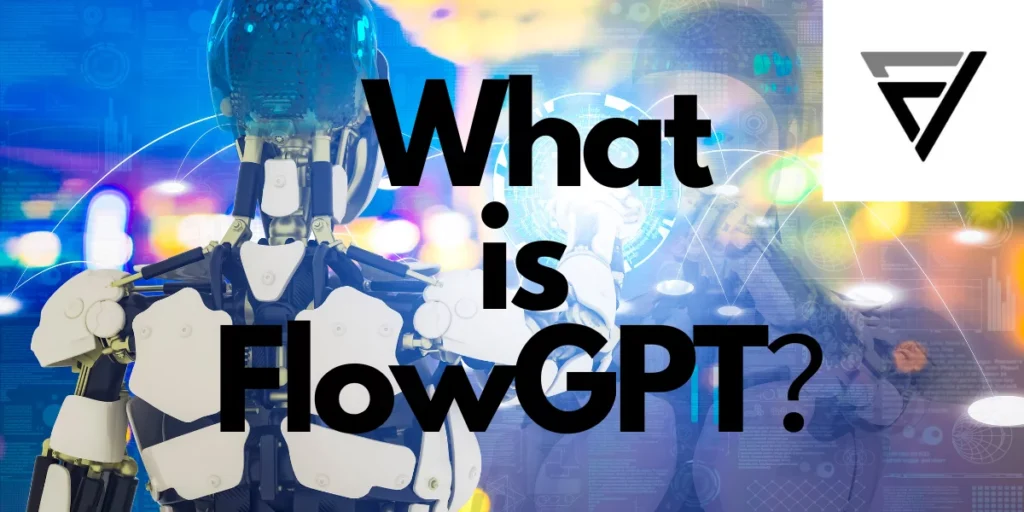Introduction:
The realm of artificial intelligence is undergoing a revolutionary transformation, marked by the rapid emergence of novel tools and platforms. One such disruptor making waves in the AI space is FlowGPT. This article delves into the intricate facets of FlowGPT, exploring its innovative foundations, the expansive potential it harbors, and the ethical considerations that loom on the horizon.
The Evolution of AI: FlowGPT’s Unique Proposition
- AI App Marketplace: FlowGPT redefines the traditional app store model, housing potent AI tools instead of conventional applications.
- Diverse Tasks: Trained on extensive datasets, FlowGPT can craft blog posts, generate code snippets, and engage in meaningful conversations.
Empowering Developers: Unleashing Custom AI Applications
- High Customization: FlowGPT empowers developers and users to tailor AI applications according to unique requirements.
- Infinite Possibilities: Users can harness advanced AI models like GPT-3, LaMDA, and Llama 2, customizing them for specific needs.
Embracing an Open Ecosystem: Fueling Innovation
- Community Collaboration: FlowGPT fosters collaboration within the developer community, accelerating AI innovation.
- Industry-Specific Solutions: The open ecosystem enables the creation of specialized AI applications for various sectors.
FlowGPT’s Ascendance: A Meteoric Journey
- Swift Popularity: Launched in 2022, FlowGPT has rapidly ascended, amassing millions of users and securing significant funding.
- Growing Demand: The platform’s growth highlights a surging demand for accessible AI tools.

The Potential Advantages of FlowGPT
- Augmented Productivity:
- Automated Tasks: AI apps within FlowGPT automate repetitive tasks, freeing up time for creative pursuits.
- Overcoming Writer’s Block: Writers can overcome obstacles with AI-generated suggestions.
- Stimulated Creativity:
- AI as a Muse: FlowGPT kindles innovation, acting as a muse for artists, writers, and musicians.
- Exploring New Realms: Artists can explore new visual realms, and musicians might discover novel melodies.
- Democratization of AI:
- Accessible Tools: FlowGPT makes AI more accessible to a broader audience, empowering individuals and businesses.
The Dilemmas and Potential Pitfalls
- Misinformation and Bias:
- Open Ecosystem Risk: There’s a risk of AI apps propagating misinformation or biases present in training data.
- Filtering Mechanisms: Robust filtering and moderation mechanisms are crucial to mitigate these risks.
- Lack of Transparency:
- Understanding AI Processes: Transparency is essential for user trust and understanding how AI apps function.
- Questionable Outcomes: A lack of transparency can result in outcomes that raise questions.
- Job Displacement:
- Automation Impact: While AI can automate tasks, it may lead to job displacement in certain sectors.
- Proactive Strategies: Addressing the impact on employment requires proactive strategies and workforce retraining.

Navigating the Future: Towards Responsible AI Development
- Establishing Ethical Guidelines:
- Guiding Principles: Clear ethical guidelines for developers and users are crucial, addressing bias, transparency, and accountability.
- Investing in Explainable AI (XAI):
- User Understanding: XAI techniques enhance user understanding of AI decisions, fostering trust and reducing misuse.
- Promoting AI Literacy:
- Informed Decision-Making: Educating users about AI capabilities and limitations empowers them to make informed decisions.
The Promise of Customization: Unlocking Infinite Possibilities
- User-Centric Approach: FlowGPT extends customization beyond developers, allowing users to tailor AI applications.
- Diverse User Backgrounds: This approach caters to individuals with diverse backgrounds and needs.
The Collaborative Landscape: Building a Community of Innovators
- Shared Insights: FlowGPT fosters collaboration through shared insights, accelerating AI innovation.
- Collective Effort: The collaborative landscape ensures a collective effort in addressing challenges and refining the platform.
Realizing Industry-Specific Solutions: Niche Applications Unleashed
- Tailored Solutions: FlowGPT enables developers to craft industry-specific solutions tailored to unique sector demands.
- Breakthroughs in Various Sectors: The platform facilitates breakthroughs in healthcare, finance, education, and beyond.

User-Friendly:
- Accessibility: FlowGPT’s commitment to a user-friendly interface bridges the gap for non-technical users.
- Democratizing AI Access: This accessibility factor is pivotal in democratizing AI usage.
The Educational Frontier: Empowering Learning and Skill Development
- Educational Tool: FlowGPT serves as a valuable tool for students, aiding in various educational aspects.
- Knowledge Ally: From generating educational content to assisting in coding exercises, FlowGPT becomes an ally in knowledge acquisition.
The Creative Renaissance: AI as an Artistic Partner
- Creative Catalyst: Artists, writers, and musicians find a compelling ally in FlowGPT as a creative catalyst.
- AI as a Muse: FlowGPT becomes not just a tool but a muse in the hands of creative minds.
Ethical AI Governance: Safeguarding User Interests
- Framework for Responsible Use: Robust ethical AI governance establishes frameworks for responsible use.
- Privacy Protection: Ensuring privacy protection and adherence to ethical standards safeguards user interests.
The Role of Explainability: Building Trust in AI Decisions
- Transparency Mechanism: Incorporating features for explainability builds trust by elucidating AI decision-making processes.
- Bias Identification: This transparency aids in identifying and rectifying biases in AI-generated outputs.
Cross-Pollination of Ideas: A Catalyst for Innovation
- Collaborative Synergy: FlowGPT’s open ecosystem facilitates the cross-pollination of ideas, leading to innovative breakthroughs.
- Unexpected Applications: Collaboration becomes a breeding ground for unexpected applications of AI.
Ethical AI Audits: Ensuring Accountability and Fair Practices
- Regular Audits: FlowGPT could implement regular ethical AI audits to assess performance and identify biases.
- Proactive Measures: Proactive measures demonstrate a commitment to accountability and fairness.
Inclusive Design: Catering to Diverse User Needs
- Inclusive Philosophy: An inclusive design philosophy enhances FlowGPT’s impact by considering diverse user needs.
- Broad User Spectrum: Prioritizing inclusive design ensures FlowGPT serves a broad spectrum of users.
Continuous Learning Mechanism: Adapting to User Feedback
- Adaptive Platform: FlowGPT’s success lies in its ability to adapt and evolve based on continuous user feedback.
- Algorithm Refinement: Implementing a continuous learning mechanism refines algorithms and improves response accuracy.

Addressing Environmental Impact: Sustainable AI Practices
- Optimizing Energy Consumption: Implementing sustainable AI practices, such as optimizing energy consumption, positions FlowGPT as environmentally conscious.
- Responsible Model Training: Proactive measures contribute to a responsible environmental footprint.
Strengthening Cybersecurity Measures: Safeguarding Against Threats
- Security Integration: FlowGPT actively integrates robust cybersecurity measures to safeguard against potential threats.
- Data Integrity: Proactive measures ensure the integrity and privacy of user data.
The Role of User Education: Promoting Responsible AI Use
- Awareness Creation: FlowGPT can play a pivotal role in creating awareness about responsible AI use.
- Informed Decision-Making: Educating users about their capabilities and limitations empowers them to make informed decisions.
Global Collaboration for Ethical AI Standards
- International Engagement: Given its global reach, FlowGPT can engage with international organizations to establish universally accepted ethical guidelines.
- Consistent Deployment: Collaboration ensures consistent and responsible deployment of AI on a global scale.
Socio-Economic Impact Assessment: Balancing Progress and Inequality
- Comprehensive Assessment: Widespread adoption necessitates a thorough socio-economic impact assessment of FlowGPT.
- Informed Decision-Making: Understanding implications ensures informed decisions to balance progress and address potential inequalities.
Conclusion:
In conclusion, FlowGPT embodies the promise of transformative innovation while navigating the complex ethical and societal dimensions of AI. Its user-centric, customizable approach opens doors to infinite possibilities, but the journey forward requires a collective commitment to responsible development, continuous learning, and global collaboration. As we ride the wave of AI evolution, FlowGPT stands at the crossroads, offering a glimpse into the future – a future where AI not only empowers but does so with utmost responsibility and inclusivity.



